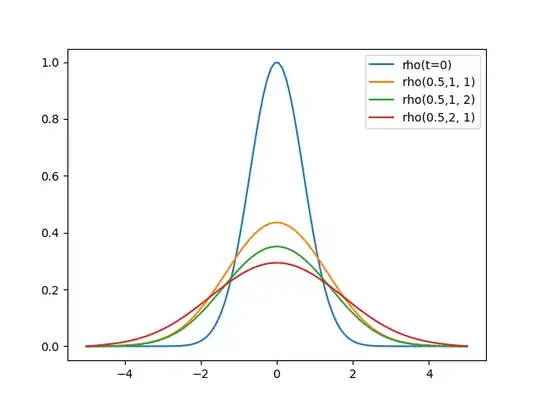I am having a hard time trying to think of this model:
Imagine you have a normal distribution of +q charges in 2D
$$\rho(r,t=0)=\rho_0 e^{-\frac{r^2}{\sigma_0^2}} $$
where $\sigma_0$ is the width of the distribution. How does the distribution change over time?
To model this, Nearst-Planck equation can be written as
$$\frac{\partial }{\partial t}\rho(t,r)=D[\nabla^2\rho(r,t)-\beta \nabla\cdot(\textbf{E}(r,t)\rho(r,t))]$$ with D as the diffusion coefficient and $\beta=(kT)^{-1}$ as the reciprocal of the thermodynamic temperature. The $\textbf{E}$ field is due to the charge distribution itself. But
$$\textbf{E}(r,t)=-\nabla \phi(r,t) $$
so the equation is rewritten as
$$\frac{\partial }{\partial t}\rho(t,r)=D[\nabla^2\rho(r,t)+\beta \nabla\cdot(\nabla \phi(r,t)\rho(r,t))]$$
Additionally, due to Poisson's equation
$$\nabla^2\phi=-\frac{\rho(r,t)}{\epsilon}$$
It is known that for non-charged-particles ($\phi=0$), the solution for the same initial condition (normal distribution) is:
$$ \rho(r,t)=\frac{\rho_0 \sigma_0^2}{\sigma_0^2+4Dt}e^{-\frac{r^2}{\sigma_0^2+4Dt}}$$ which is just a Gaussian with a width $(\sigma_0^2+4Dt)^{\frac{1}{2}}$.
Is it possible to try to approximate the solution or simulate numerically the distribution over time for charged particles?
Thanks for all the insights!
